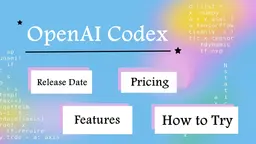BuildShip Howto
BuildShip is an AI-powered low-code visual backend builder that lets developers create APIs, workflows, and backend logic with the ease of no-code tools while maintaining the power and flexibility of code.
View MoreHow to Use BuildShip
Sign up and create account: Visit buildship.com and sign up for a free account. You get one free project by default.
Create a new workflow: Start a new workflow project from your dashboard. This will be your backend logic container.
Add trigger node: Select a trigger node that will start your workflow - this could be an API endpoint, scheduled job, or other event trigger.
Add processing nodes: Connect pre-built nodes or generate custom nodes using AI to process your data. You can use any of the 1M+ NPM packages or AI models from OpenAI, Stable Diffusion, etc.
Configure node settings: Configure each node's settings and parameters. You can write custom JavaScript/TypeScript code if needed using the built-in code editor.
Connect nodes together: Connect your nodes together visually to create the workflow logic. Data flows from one node to the next.
Test the workflow: Use the built-in debugger to test your workflow. You can view logs and troubleshoot any issues.
Deploy workflow: Once tested, hit 'ship' to instantly deploy your backend workflow to production. It will run on BuildShip's serverless infrastructure.
Monitor and maintain: Monitor your workflow execution through logs. You can make changes and redeploy at any time. Version control helps track changes.
Scale as needed: Your workflow will automatically scale based on usage. Upgrade your plan if you need more resources or features.
BuildShip FAQs
BuildShip is a low-code visual backend builder that allows users to build scalable backend workflows, APIs, scheduled jobs, and cloud functions. It combines the best of no-code and code approaches, powered by AI.
BuildShip Monthly Traffic Trends
BuildShip experienced a 4.3% decline in traffic, with 105,438 visits. Despite being featured as a top alternative in developer tools, the decline might be due to a lack of recent updates or increased competition from platforms like Eclipse Buildship and Zapier.
View history traffic
View More











